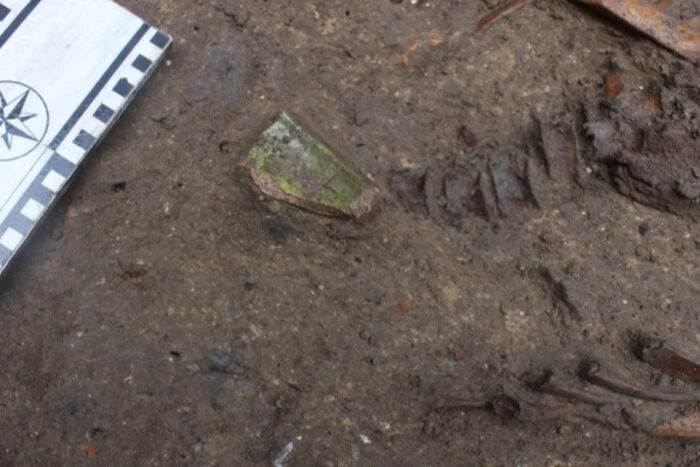Archaeologists discovered remnants of the first construction period of the Walls in Vinnytsia.


During archaeological excavations in the 'Walls' complex in Vinnytsia, traces of the first construction era were found. According to senior researcher Pavlo Nechytailo, archaeologists discovered a burial site from the 17th century and a significant layer of broken bricks and pottery dating back to the 1630s.
A lime pit used for producing building mortar was also found. According to archaeologists, this material was used to construct the first buildings in Vinnytsia.
Research on the 'Walls' was conducted in 2013-2015 and in 2018 under the direction of Larysa Vynohrodska and Olha Manihda. The complex includes the buildings of the Jesuit monastery, Jesuit church, collegium, convent, and Dominican monastery and church.
Currently, these buildings house the regional local history and art museums, the state archive of the region, the Cathedral of the Transfiguration of the Lord, and a technical lyceum.
Research and Restoration
Doctor of Historical Sciences Oleg Malchenko also participated in the studies. According to the chief architect of Vinnytsia, Yevhen Sovynskyi, the city council regularly orders archaeological excavations to study the cultural layer of the city. It also allocates funds for the restoration of cultural heritage objects.
They are currently waiting for the archaeologists' report, after which a decision will be made regarding the museification, conservation, or artistic restoration of this part of the 'Walls'.
Read also
- Russia attacked Sumy with drones
- The enemy delivered eight strikes on Kharkiv: there are casualties (updated)
- Explosions recorded near high-rise buildings in Kharkiv, fire erupted
- Frontline situation as of June 19. Summary of the General Staff
- I am Plotva: Ukrainian soldier narrowly escaped death due to a name coincidence in a post
- A fatal accident involving four cars occurred in Kryvyi Rih (video)









